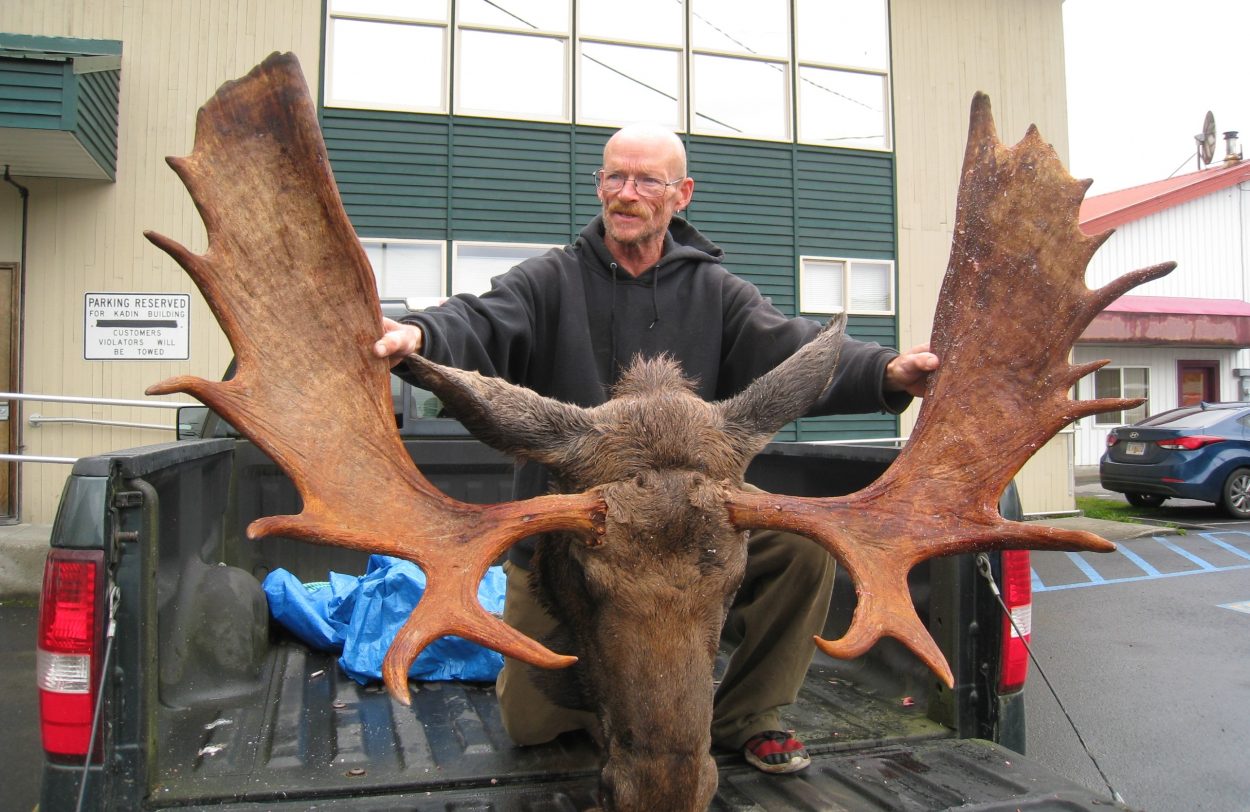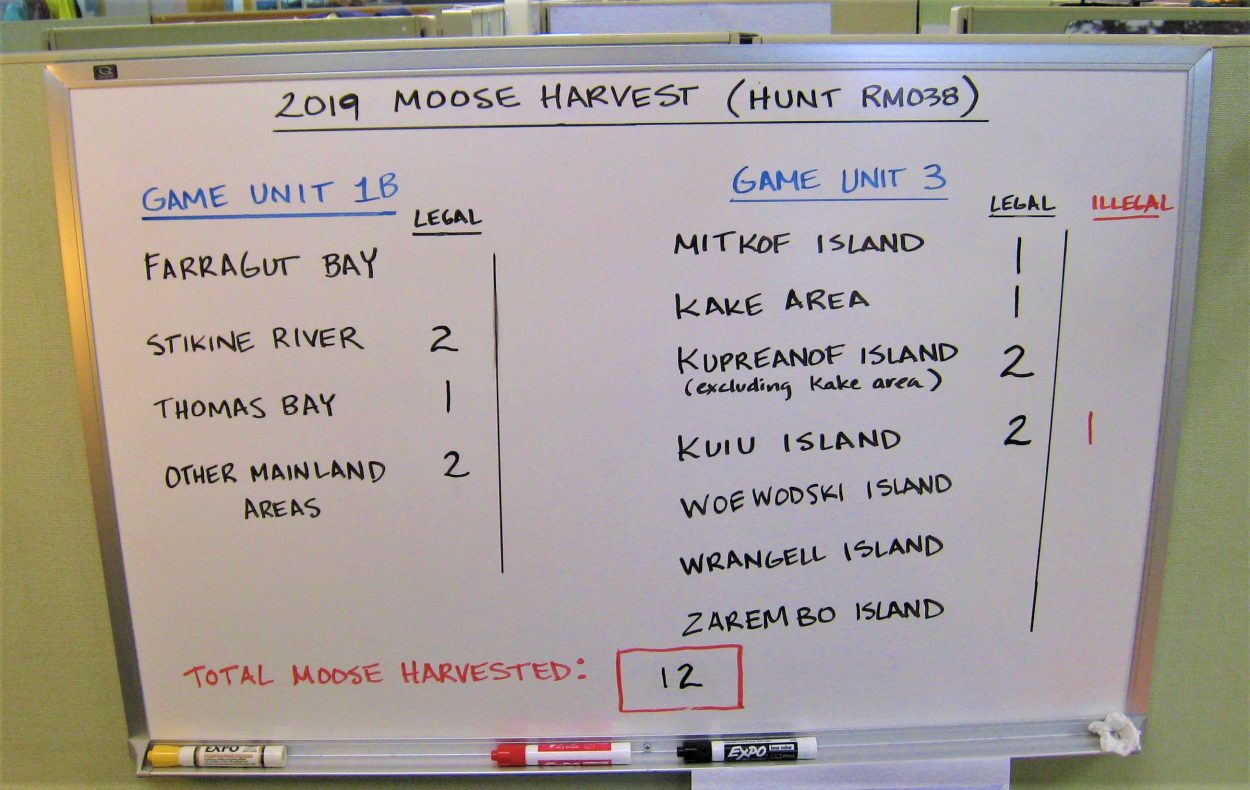
The moose hunting season is underway for the areas around Petersburg, Wrangell, and Kake. As KFSK’s Angela Denning reports, the season has gotten off to a busy start and managers are expecting it to be a similar harvest to last year.
Moose season began on Mitkof Island and nearby areas on September 15. The season runs for one month. Frank Robbins is the Area Wildlife Biologist for the Alaska Department of Fish and Game in Petersburg. He says the first few days of the hunt have been busy ones.
“The season’s going good,” Robbins said. “We’ve already checked in quite a few moose from Kuiu [Island] and Kake and the Stikine River area.”
The regulations for this year’s moose hunt are similar to recent years. There are no quotas and instead there are antler restrictions. Those allow hunters to take moose with two or more brow tines on both sides, three brow tines on at least one side, spike fork antlers or 50-inch antlers. These restrictions protect middle-aged bulls that are considered important for breeding. The antlered hunts have been in place since 2009.
Robbins came to work at the Petersburg ADFG office this summer. Before that he managed wildlife in Interior Alaska from Glenallen for about a decade. Here in Southeast, he says managers rely on hunts for population data.
“The best data I have for actually any game species is our harvest data,” Robbins said.

Hunters in Southeast are required to report many details like their harvest location, the sex of the animal, where they were hunting, and how many days they hunted. That helps managers get an idea of what’s out there. Robbins says it’s difficult to track wildlife populations in Southeast because of the impenetrable forest.
“Probably our biggest challenge and my biggest challenge as a wildlife manager is developing some sort of estimate of abundance,” Robbins said. “In other parts of the state where you can actually see, you can fly aerial surveys. For example, in my past position I flew aerial surveys for moose and we did photo surveys for caribou and we did wolf surveys in the winter following wolf tracks and we were actually able to observe the animal. In a forested habitat that’s problematic.”
Robbins expects the moose season to be like last year when 105 bulls were harvested. The average harvest the last five years is 108 bulls.
So far, the season has gotten off to a busy start. In the first four days of the hunt, 12 harvested bulls were reported to Fish and Game. One of those is considered illegal and didn’t meet the requirements. Hunters have five days to check in a harvested moose.
The hunt covers several areas: Unit 1-B on the mainland, the Unit 3 islands, and the extreme southern portion of Unit 1-C, also on the mainland.
Recent Moose Harvests:
Year 2018—105 bulls
Year 2017—117 bulls
Year 2016—112 bulls
Year 2015—103 bulls
Year 2014—104 bulls
Year 2013—85 bulls
Year 2012—67 bulls











